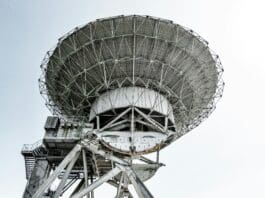
This post is also available in:
 עברית (Hebrew)
עברית (Hebrew)
Balloons could integrate into drone missions. The U.S. Army is looking at developing a network of high-altitude balloons that would fly in the stratosphere and be able to launch swarms of unmanned aircraft, including those configured as loitering munitions or “suicide drones,” over enemy-controlled territory.
These lighter-than-air vehicles could also be configured as sensor platforms to collect various kinds of intelligence or deploy other surveillance systems that would fall to the ground in order to monitor hostile movements, as well as act as communications relays, according to thedrive.com.
The balloons are part of a broader, layered Multi-Domain Sensing System (MDSS) concept that the Army is in the early stages of developing.
It was previously known that the Army was exploring using balloons floating in the stratosphere, which begins at altitudes ranging from 23,000 to 66,000 feet, depending on where you are on Earth, for intelligence, surveillance, and reconnaissance (ISR) and communications roles. As part of the larger MDSS network, they would fill something of a gap between traditional ground-based and aerial ISR and communications platforms and space-based systems.
The balloons are expected to provide some beyond-line-of-sight capability, whether it’s communications, extended distances, to be able to provide the ability to enable sensing of targets deep in the adversary’s areas, to be able to reinforce and complement existing sensing systems other than the aerial layer as well as the space layer.



